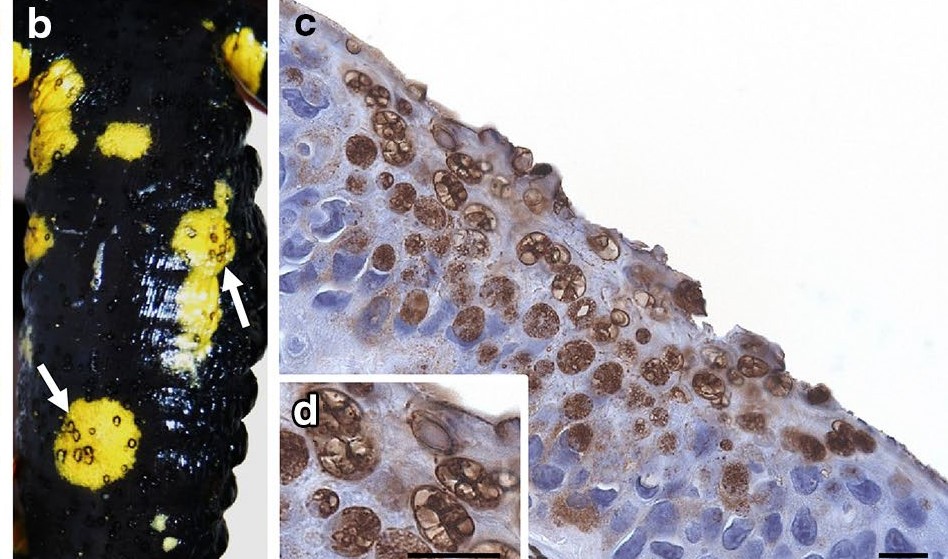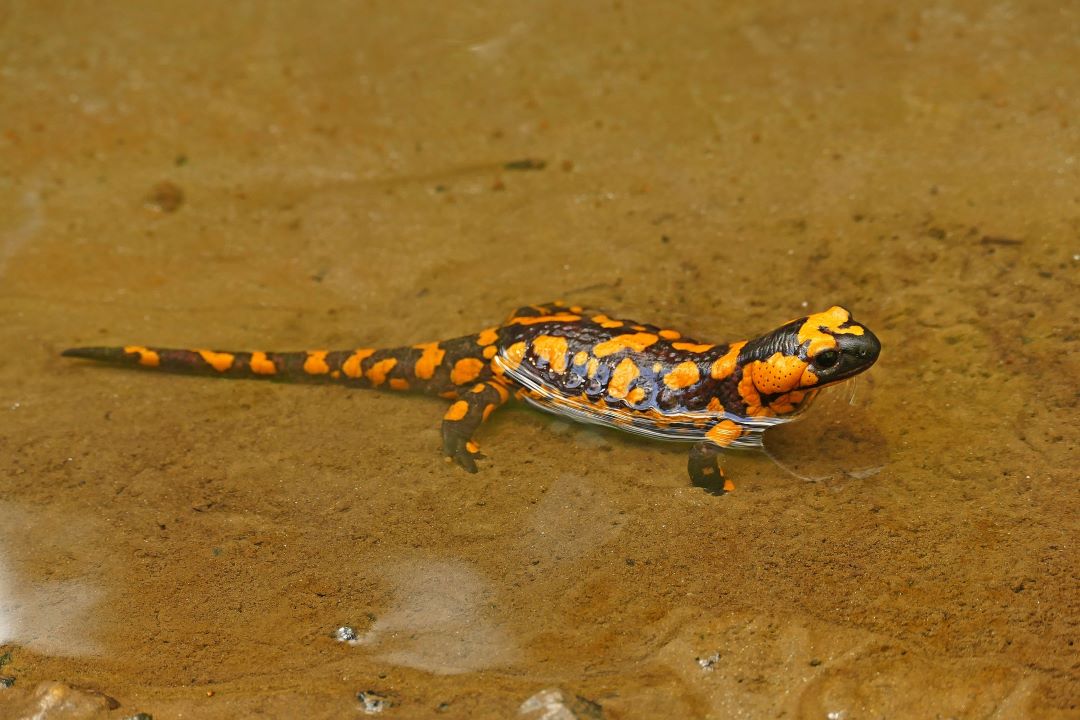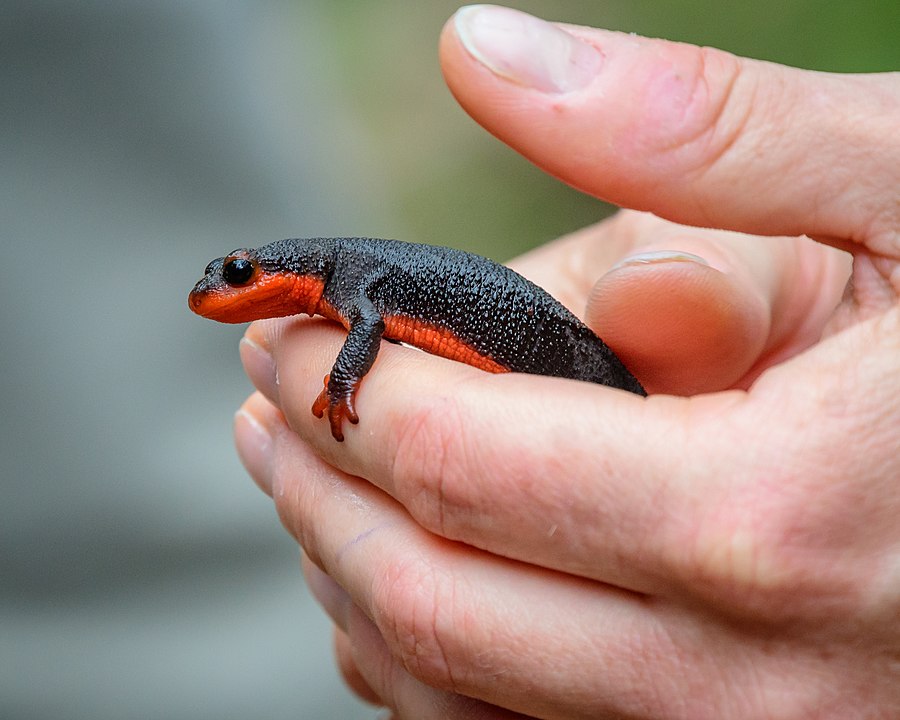Researchers have discovered a fungus that threatens salamanders in the Netherlands and Belgium. The disease probably came to Europe from Asia due to the animal trade.
Europian Salamanders Infected by Fungus
The Fire salamanders’ bodies (Salamandra salamandra) covered with sores were discovered by the river Máza in Maastricht, the Netherlands. Some reptiles were dead; others moved sluggishly and with visible difficulty. The disease has spread to the other Belgium watercourse side and is causing the same damage to salamanders there.

More detailed analyzes revealed that the salamanders were attacked by the fungus Batrachochytrium salamandrivorans. European amphibians with this deadly disease have not yet been discovered in other parts of Europe.
Asian Reptiles Are Considered Fungus Carriers
The fungus Batrachochytrium salamandrivorans probably got to the Netherlands with Asian amphibians, which are largely imported for the breeders’ interest. British scientists examined amphibians imported from Asia. They examined animals in the export companies’ warehouses, amphibians transported from Asia to London Heathrow Airport, and some pet stores.

Samples taken from salamanders and newts in Southeast Asia and Japan are positive on the fungi. Tests discovered the fungus’s spores on three Vietnamese salamanders (Paramesotriton deloustali) imported from Asia.
Although Asian amphibian species carry fungi spores on their bodies, they have no symptoms. Their resistance to this disease points to the Asian origin of the fungus. Experts also consider the Fire belly newt (Cynops pyrrhogaster) and the Blue-tailed newt (Cynops cyanurus) species possible fungus carriers when imported.

In addition to the salamander, the newt (Ichthyosaura alpestris) and the great newt (Triturus cristatus) are also sensitive to this fungus. Researchers point to the fact that fungus transmits by touch. All it takes is for a European spotted salamander to rub against the skin of an Asian newt – at that moment, it becomes infected, sick, and dies.
Is it possible to prevent the escape of infected exotic animals into the wild at all?
Source: https://brill.com/view/journals/amre/40/3/article-p265_1.xmllanguage=en Featured mage by Sascha Herrmann from Pixabay















